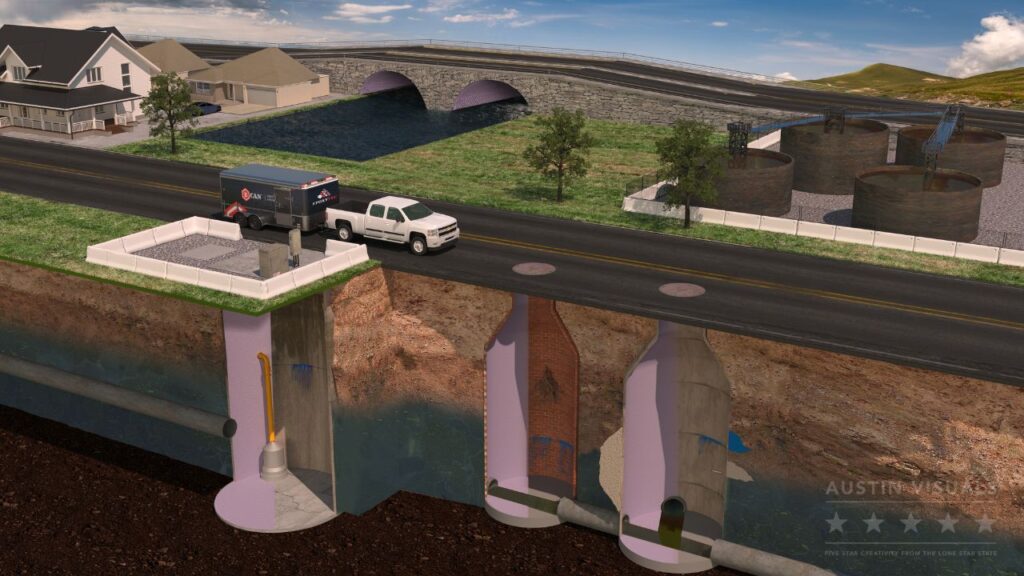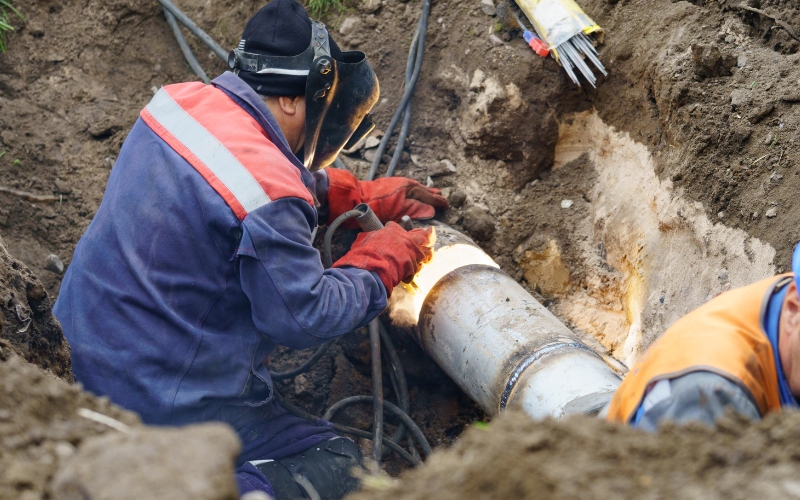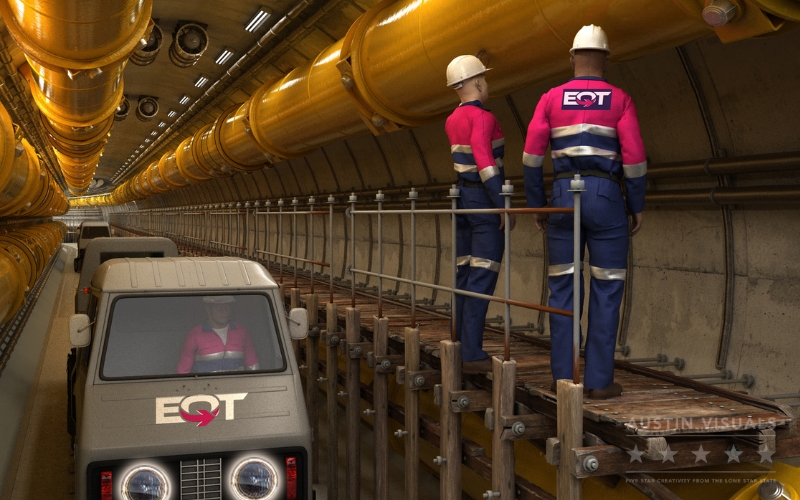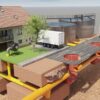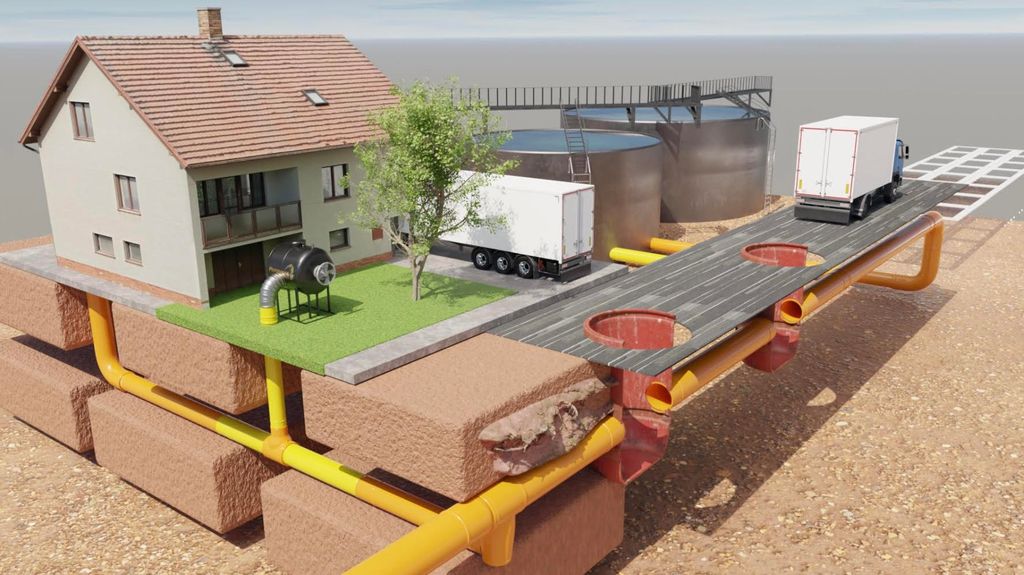
Introduction
You don’t have to see a pipe to rely on it. Most of what makes daily life possible in a city happens underground. Water travels through pipes to reach homes, businesses, hospitals, and fire hydrants. Those same systems also carry waste away, move stormwater out of flood zones, and feed entire blocks with irrigation or cooling lines. While people may think of plumbing inside a home, the real work of a community begins with underground pipe systems. These connections keep streets dry, water clean, and public health in check.
Understanding how these systems function can help cities manage them better and explain them more clearly to residents, boards, and investors. With video, those invisible systems become visible.
If your organization needs to communicate infrastructure clearly, email [email protected] or call +1-512-591-8024 for a free planning session.
Why Underground Pipe Systems Matter
Pipes below the surface make modern communities work. Clean water starts at a treatment plant, but it doesn’t arrive on its own. Pipes carry it through loops, valves, and pressure-regulated systems to reach homes, schools, and businesses. The same goes for wastewater. Once a toilet is flushed or a sink is drained, pipes take that water to a separate system for treatment and release.
Then there’s stormwater. Rain hits pavement and flows into drains. Those drains connect to storm systems that prevent roads from flooding or basements from backing up. In some areas, these lines stretch for dozens of miles under the city grid. Without proper drainage, even a short rainstorm can turn into a public problem.
These systems must work together. When they don’t, the result can be sinkholes, water loss, or contamination. That’s why maintenance, planning, and communication are critical.
How Communities Rely on Pipe Networks Every Day
Most people don’t think about infrastructure unless something breaks. But these systems support everything from personal hygiene to fire safety.
When a fire truck pulls up to a hydrant, the pressure in that line must be constant. If the underground supply line has a leak or hasn’t been maintained, water may not flow with enough force. That puts lives and property at risk.
The same goes for schools and hospitals. If a pipe system fails under those facilities, the impact spreads quickly. It’s not only about comfort—it becomes a matter of safety, sanitation, and operation.
Even outside city limits, rural areas rely on underground pipe systems to move water for agriculture, connect irrigation networks, or support livestock operations. These connections support both food supply and the economy.
What Happens When Systems Go Unseen Too Long
Ignoring aging pipe systems can create major issues. A slow leak can waste thousands of gallons of water each day. A blocked storm line can create street-level floods after a single rain. A cracked sewer pipe can spread bacteria into groundwater or open space.
Some cities are still using cast iron or clay pipes installed decades ago. These materials wear down with time. If no one knows the condition of the lines, then the first sign of trouble is often too late. Emergency crews step in, roads get closed, and repair budgets spike.
One way to avoid this is by improving how these systems are explained. That includes internal documentation for staff and clear external messaging to boards or public audiences. This is where animation and video provide value.
Using Video to Show What Maps and Drawings Can’t
Static diagrams and technical drawings are helpful, but they can only go so far. Most non-technical audiences struggle to visualize what’s happening beneath the surface. That’s where animation comes in.
Video lets you walk people through a water loop, show the movement of stormwater, or simulate a break in a sewer line. With a short animated clip, you can demonstrate pressure drops, system flow, or pipe repair sequences with accuracy and detail.
Cities can use these videos in council meetings. Engineering firms can use them during project pitches. Utility companies can use them to train workers faster. They’re also ideal for public awareness campaigns, especially during projects that involve service interruptions.
Austin Visuals works with city planners, infrastructure engineers, and contractors to produce visual tools that explain underground pipe systems clearly. Each video is based on real data and produced with the viewer in mind.
Pipe Systems Are Not One Size Fits All
Every city or region builds their systems differently. In some areas, stormwater and sewer are separate. In others, they flow into combined systems and need special treatment to avoid overflow. Older cities may have overlapping lines. Newer builds may separate every flow into its own route.
Beyond that, the pipe material and size vary based on use. Water mains use different pressure ratings than sewer lines. Storm drains use gravity, while potable water often needs consistent pump pressure.
When it’s time to explain these details to teams, public groups, or regulators, video can help align everyone quickly. Instead of reviewing dozens of pages of technical terms, a short animation can show where lines go, how they function, and what needs to be replaced.
A Real-World Example: Turning Plans Into Clear Messages
One client needed to explain a major pipe replacement project that would affect a busy business district. The goal was to help residents and owners understand why roads would close and services might be interrupted.
The animation we built showed the existing pipe network, the expected upgrades, and how the flow would improve. It walked viewers through the timeline, safety steps, and benefits. It was used in town hall meetings, websites, and direct mailers.
As a result, complaints dropped, and city staff reported that people felt more informed. That’s what happens when information is made clear.

Who Needs Visual Support for Underground Infrastructure
Our clients come from many fields. Civil engineering firms often use video to pitch complex projects. Water authorities use animation to train new staff or explain plant operations. Construction contractors use video to coordinate work across subcontractors and city departments.
Public school systems have also used animated video to explain stormwater retention upgrades. Hospitals have used it to show backflow prevention systems to maintenance teams. Parks departments have used it to explain irrigation zoning to their staff.
Each case needed a tool to make unseen systems more understandable. And each result came from clear, careful planning paired with professional video production.
What Makes Austin Visuals a Good Fit
We don’t use templates. Every video is built from scratch to match your project needs. Our team studies the flow, source material, and goal before we begin. This saves time later and gives you a final product that matches your messaging.
Clients receive storyboards, voiceover samples, and detailed updates along the way. We work in 2D, 3D, or hybrid formats. Our editors follow a precise process that gives you clean cuts, technical accuracy, and on-brand results.
We’re based in the U.S. but work with teams across North America, Europe, and Asia. Whether your project involves stormwater management or large-scale utility upgrades, we build the video content that explains it.
Our Demo Reel 2025
FAQs: Underground Pipe Systems and Video Communication
How long does it take to create an animated infrastructure video?
Most projects take between four to six weeks, depending on length and complexity.
Can you animate based on engineering plans?
Yes. We can work from CAD files, GIS data, hand sketches, or system maps.
Is video only for public communication?
Not at all. Many clients use video for internal training, board presentations, or permit applications.
What if our system is unique to our region?
That’s expected. We create custom visuals that reflect your real pipe network and conditions.
Can we request voiceover in multiple languages?
Yes. We offer translated voice tracks or subtitle options for global audiences.
Final Thoughts
Most people never think about what’s under the street. But these pipes affect every part of life—clean water, emergency response, safe roads, and healthy neighborhoods. When these systems are explained clearly, they’re maintained better, upgraded sooner, and supported more often.
Austin Visuals helps you turn complex pipe systems into clear visual stories. Whether you’re planning a new system or explaining upgrades to the public, our team builds videos that inform and support your message.
Contact Austin Visuals at [email protected] or call +1-512-591-8024 to get started. Let’s help your team explain what matters—even if it’s underground.

